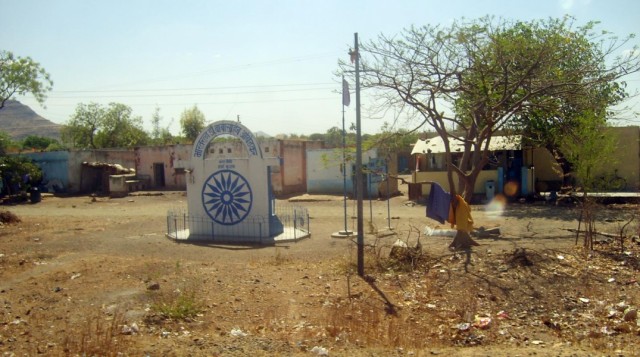Esther
а скажите, плиз, может вы что-нибудь и про кастовый вопрос в Непале знаете? может ссылочки есть?Большинство населения Непала - шиваиты; 90% населения Непала - индуисты, 5% - буддисты. Но! Непальцы из-за холодного климата и близости к Тибету едят мясо, обычно яков, из-за чего в своё время все тибетцы и многие касты непальцев автоматически попали в разряд неприкасаемых в кастовой системе индуизма, что делает эту систему не на 100% популярной в Непале - да, официально там есть кастовая система, но - буддисты её не признают в принципе, а с ними и многие непальцы-шиваиты. Кроме того, многие касты - всего лишь деление на горные племена без явного превосходства одной касты над другой, так что это скорее именно кастовое деление, а не деление на варны, хотя такое там тоже есть - непальская каста воинов (кшатриев) называется чхетри. Кстати, в Ладаке до сих пор нет кастовой системы индуизма, потому как ладакцы-тибетцы, взглянув на свои перспективы при возможном утверждении кастовой системы в Ладаке с приходом меньшинства индусов-переселенцев, дружно решили "нафиг!" ;)
Про Непал подробно на английском можно почитать здесь в конце страницы: http://sss.vn.ua/nepal/
RELIGION
Nepal's religious diversity reflects its position at the cultural crossroads between India and Tibet. Nepal is about 90% Hindu and 5% Buddhist, with small Muslim, Christian, and Jain minorities. A defining characteristic of life in Nepal, however, is its unique breed of mix-and-match religious syncretism. Although Nepal is the only country in the world with Hinduism as an official state religion, most Nepalis follow some combination of Hinduism and Buddhism, with plenty of local traditions thrown in for good measure. Asked if they are Hindu or Buddhist, many Nepalis will reply that they "don't know," or that they're "both." That people can at once follow a religion of 330 million gods and one that originally recognized no gods at all baffles many visitors, but it seems to work nonetheless.
In general, the northern regions close to the border with Tibet tend to be Buddhist, while the lands closer to India are Hindu. The areas in between (including Kathmandu Valley) have the most complex blend of the two.
HINDUISM
Hinduism first came to the Kathmandu Valley with the Licchavi dynasty during the 4th and 5th centuries AD. Introduced to the hills by conquerors, it has long been Nepal's religion of status — brahmins (the priestly caste) and chhetris (the Nepalese warrior caste) have traditionally been at the top of the social hierarchy. Various legal reforms long ago tried to force lower-class Buddhists into an occupational caste system; this social practice still survives, though few Buddhists recognize the legitimacy of the caste system.
Shiva is the most popular Hindu god in Nepal; he is a fitting lord for this mountainous land, since he began his career as a Himalayan wanderer. He commonly appears in Nepal as Bhairava or "Bhairab", a ghoulish figure who chases away demons, though he is also the compassionate Mahadev, worshiped out of love and devotion. In his form as Pashupatinath, the benevolent Lord of Animals, Shiva is Nepal's patron deity, and Nepal is often referred to as Pashupatinath Bhumi (Land of Pashupatinath). The temple of Pashupatinath near Kathmandu is the most important Hindu site in Nepal.
Vishnu, the cosmic "preserver," is also popular. In Nepal he is often called Narayan, a name that comes from his role in the Hindu creation myth — he sleeps on the cosmic ocean while the creator god, Brahma, sprouts from his navel. Goddesses are also worshiped, and Nepal's grandest festival, Dasain, is held in honor of Durga. Nepal also holds a special place for Annapurna, goddess of abundance and distributor of food. Each goddess is an individual in her own right, but the goddesses are also important as the consorts of the male deities, embodying the female aspect (shakti) of each god. In the Nepalese religious tantras, this shakti is considered the most powerful and active force in the cosmos.
BUDDHISM
The Buddha was born during the 6th century BC in Lumbini, within the borders of modern Nepal. Although he left Lumbini as a young man, and did most of his traveling and teaching farther south in India, his doctrines eventually returned to the land of his birth, spreading deep into the mountains.
Most Nepali Buddhists follow the Mahayana (Great Vehicle) school, which differs from the older Theravada (Way of the Elders) school. Mahayana Buddhism, with its doctrine of salvation for all, developed in India during the 1st century AD and came to predominate in Tibet, China, Japan, and other parts of East Asia. The more orthodox Theravada school persisted in Sri Lanka and most of Southeast Asia. While Buddhism in India wa.s subsumed by Hinduism, a particularly Indian-influenced Mahayana Buddhism survived in Nepal, where it is still practiced today.
Mahayana Buddhism initially developed after a disagreement over monastic law (vinaya) in Buddhist communities. The Mahayana doctrines put less emphasis on the individual quest for nirvana, stressing instead the need for compassion for all beings. The Buddha was more than just a wise teacher and holy man in the Mahayana tradition — he is a cosmic being with magical powers and countless incarnations. The concept of a bodhisattva, who vows to put off his own enlightenment for the sake of saving all sentient beings, is very important in the Mahayana tradition, and a number of bodhisattvas are worshiped alongside the Buddha.
TIBETAN BUDDHISM
In Tibet a unique form of Buddhism developed when the Mahayana and Vajrayana (Thunderbolt Vehicle) traditions blended with the indigenous religion, Bon. Although Buddhism was originally brought to Tibet via Nepal, Tibetan traditions exerted a greater influence on the religion as it is practiced in Nepal than the other way around. As a result of the Chinese occupation of Tibet, many Tibetan Buddhists have immigrated to Nepal, bringing prayer wheels and prayer flags blowing the mantra Om Mani Padme Hum ("Hail to the jewel in the lotus") all across Nepal's mountains and hills. Tibetan Buddhism divides the Buddha's nature into five "aspects", reflected in each of the five elements (earth, water, air, fire, and space). It is also noted for its monastic tradition — before the Chinese take-over, 25% of all Tibetans belonged to some kind of religious order. Of the 6000 Tibetan monasteries in existence at the time of the occupation, only five remain. Tibetan monasteries are headed by teachers called lamas, addressed by the title rinpoche (precious one). Lamas are believed to have cultivated wisdom over many lifetimes, transmitting their knowledge to each reincarnation. The reincarnated lama is identified by using astrology, consulting the Tibetan oracle, and having the young candidates identify the former lama's possessions.
TANTRA
Tantra holds that polar opposites are merely two different manifestations of the same consciousness, and that the true nature of the mind can be realized by transcending opposites. Acts that are typically condemned, such as the consumption of meat fish, and alcohol are prescribed as ways of transcending dualities. Tantric rituals also involve the harnessing and release of different energies in the body through sexual intercourse.
Tantra has much in common with the Hindu traditions of shakti and yoga. Between the 7th and the 9th centuries, tantra became popular throughout India as part of both Hinduism and Buddhism, and its influence can still be seen today in Tibetan Buddhism, though it died out in India long ago. Some aspects of Tibetan Buddhism can be classified as Vajrayana (Thunderbolt Vehicle), a separate sect from the Mahayana and Theravada schools. Vajrayana inherited much of its symbology from the tradition of tantra — the major symbols of Vajrayana are the vajra or dorje (thunderbolt) and the ghanti (bell), meant to represent the male element of compassion and the female element of wisdom, respectively. The conscious release of bodily energy, achieved by meditation upon goddess figures, is also prominent. Vajrayana couples the dhyani Buddhas and the major bodhisattvas with taras, female consorts of great power and strength. Those figures are often depicted in sexual intercourse, symbolic of the reconciliation of dual energies.
INDIGENOUS TRADITIONS
Nepal has its own pantheon of indigenous gods, and most people worship these local heroes, quite regardless of any other religion they might follow. Common in the Kathmandu Valley is the worship of the Kumari, a young girl recognized as an incarnation of the Hindu goddess Durga. The living goddess stays secluded in a palace for her entire childhood until she reaches puberty, at which point she reverts to the status of a mortal. The Newaris also worship Macchendranath, a god born of a fish and identified both with Lokeshvara, Shiva's form as "Lord of the World", and with the Bodhisattva of Compassion, Avalokiteshvara. Macchendranath's towering chariot makes his festivals distinctive highlighls of the religious calendar. The Newari craftsmen of the Kathmandu Valley have also turned Bhima (or Bhimsen), the hero of the Mahabharata epic, into their patron deity. Also prominent in the valley is Manjushri, the valley's creator god, associated with Saraswati, the Hindu goddess of learning.
Outside the Kathmandu Valley, different ethnic groups preserve many of their local beliefs despile the widespread acceptance of Buddhism and Hinduism. The local gods are worshiped in return for good harvests and healthy children, and animal sacrifices to the gods are common. Main of Nepal's local religions are led by shamans, who mediate between the human and supernatural worlds.



